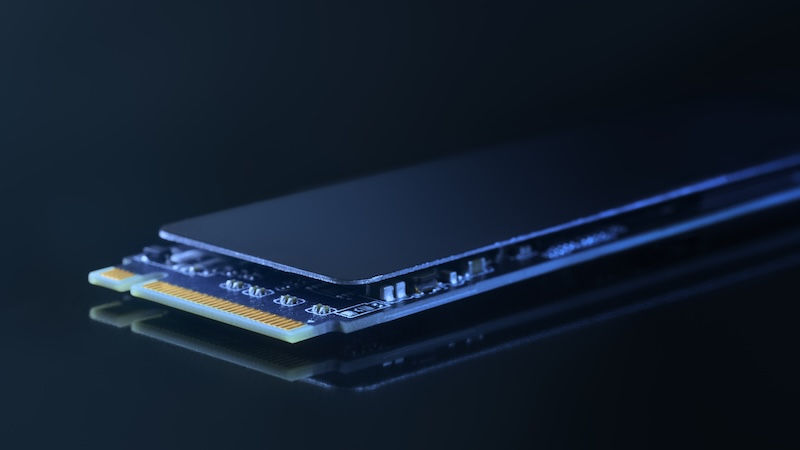How to Choose the Right SSD: NVMe vs. SATA for Everyday Users
- gotobowl82
- Jul 7, 2025
- 4 min read

If your computer is feeling sluggish, one of the easiest and most effective solutions is switching from a traditional hard drive to a solid state drive (SSD). But if you’ve started looking into SSDs, you’ve probably come across some unfamiliar terms—especially NVMe and SATA. For most people, these acronyms don’t mean much until they’re staring at a parts list or shopping cart, wondering what to choose.
At 208Geek, we help customers in Meridian and the greater Treasure Valley make smart decisions about their technology. In this post, we’ll explain the basics of SSDs, break down the differences between NVMe and SATA, and help you decide which is right for your everyday computing needs.
What Is an SSD?

A solid state drive (SSD) is a type of storage device that uses flash memory instead of moving parts. This makes it dramatically faster and more durable than traditional spinning hard drives (also called HDDs). Booting up your computer, opening files, and launching programs all feel significantly quicker with an SSD installed.

There are two main types of SSDs you’ll hear about:
SATA SSDs, which use the same interface as traditional hard drives.
NVMe SSDs, which use a much faster interface called PCIe (Peripheral Component Interconnect Express).
Let’s explore each one in more detail.
What Is a SATA SSD?

SATA (Serial Advanced Technology Attachment) is a long-standing interface standard originally developed for hard drives. SATA SSDs use this same connector, making them compatible with nearly all computers built in the last 15 years.
Pros of SATA SSDs:
Affordable: Typically cheaper per gigabyte than NVMe.
Widely compatible: Easy to install in most desktops and laptops.
Big improvement over HDDs: Even though they’re slower than NVMe drives, SATA SSDs still offer a massive speed boost compared to spinning hard drives.
Limitations:

Slower speeds: SATA drives max out around 550 megabytes per second (MB/s), which is fine for general use but may feel limiting for power users.
What Is an NVMe SSD?
NVMe (Non-Volatile Memory Express) is a newer, faster protocol designed specifically for SSDs. It connects via PCIe lanes—just like your graphics card—allowing for extremely high data transfer rates.
Pros of NVMe SSDs:

Blazing-fast speeds: Speeds can range from 2,000 MB/s up to 7,000 MB/s or more, depending on the version.
Ideal for heavy tasks: Perfect for video editing, gaming, or large data transfers.
Lower latency: Programs open almost instantly, and large files load in a flash.
Limitations:
Higher cost: You’ll typically pay more per gigabyte.
Compatibility issues: Older systems may not have a compatible M.2 or PCIe slot for installation.

So Which One Do You Need?
Here’s the honest answer: both are great and either will feel dramatically faster than the traditional hard drive your system may have now. But your choice depends on your specific needs and budget.
Choose a SATA SSD if:
You’re upgrading an older laptop or desktop with limited connectivity.
You use your computer for web browsing, email, office work, and media playback.
You’re on a budget but still want a serious speed boost.
You don’t need ultra-fast file transfers or app load times.
Choose an NVMe SSD if:

You work with large files (video, photo, audio editing).
You play modern PC games and want faster load times.
You’re building or upgrading a modern system that supports M.2 or PCIe.
You want top-tier performance and don’t mind paying a bit more.
Form Factors to Know: 2.5", M.2, and Add-In Cards
Besides speed, SSDs also differ in shape and how they connect to your computer. There are three main form factors:
2.5-inch SATA: This looks like a small flat rectangle and connects using SATA cables. It’s the most common upgrade for older laptops and desktops.
M.2: A small stick-shaped SSD that plugs directly into your motherboard. Both SATA and NVMe drives can come in M.2 form, so don’t assume M.2 means NVMe.
Add-in Card (AIC): Rare for most users, this NVMe form plugs into a PCIe slot like a graphics card and is mostly used in workstations.

If you’re unsure what your system supports, just ask us—we’re happy to check for you or perform the upgrade ourselves.
Can I Upgrade My Computer?
In most cases, yes. We regularly perform SSD upgrades for laptops and desktops, and we’re happy to help you determine whether your system supports SATA, NVMe, or both.
Sometimes, BIOS settings need to be adjusted after installation. Other times, cloning your old drive to your new one can help preserve your files, settings, and applications. These are the kinds of upgrades we handle every week at 208Geek.
Still Not Sure What to Pick?
You don’t need to be an expert to get the right storage for your computer. That’s where we come in. We’ll talk you through the options, explain what your system can handle, and get the drive installed and configured the right way.
Whether you’re doing a budget upgrade or building a high-performance rig, we can recommend the right SSD for your needs—and install it for you with care.

About 208Geek in Meridian, Idaho
Owner/Operator Jacob Van Vliet began building and repairing computer systems for friends and family out of his home in 2001. The increasing demand for computer repair led to the opening of 208Geek in the Fall of 2005, with the vision of providing outstanding service and peace of mind. Jacob, along with his team, including his wife, Brittany, is committed to delivering unparalleled, friendly, and professional service with a 100% satisfaction guarantee. In 2024, son, Johnny, joined the team and helped expand into Moscow, where he serves the computer and IT-related needs of students and staff at the University of Idaho. The 208Geek team has been named “Idaho’s Best” for IT and computer repair for the past six consecutive years. We would love the opportunity to work with you so we can show you why!




Comments